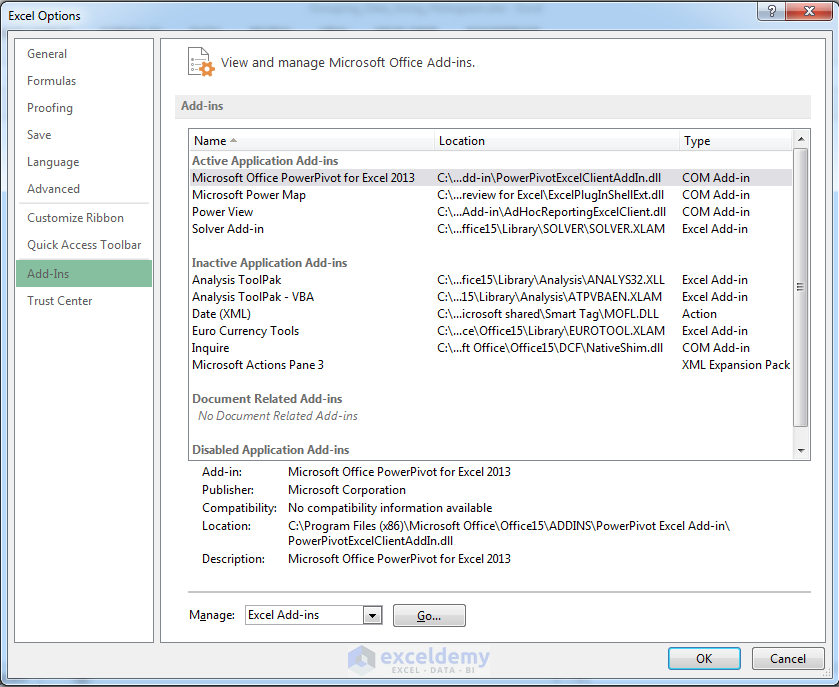

It uses the smoothing constant a, the magnitude of which determines how strongly the forecasts respond to errors in the prior forecast.

Exponential Smoothing predicts a value that is based on the forecast for the prior period, adjusted for the error in that prior forecast.The Descriptive Statistics tool generates a report of univariate statistics for data in the input range, providing information about the central tendency and variability of the data.The Covariance tool can be used in the same setting as Correlation when you have N different measurement variables observed on a set of individuals, and like Correlation, it will give you an output table (matrix) that illustrates the covariance between the two variables.This tool examines a pair or measurement variables and determines whether they tend to move together, or correlate.

The Correlation worksheet calculates the correlation coefficient between two measurement variables when measurements on each variable are observed for each of N subjects.Anova is used to see if there is any difference between groups of some variable. The Anova analysis tools (single factor, two-factor with replication, two-factor without replication) provide different types of variance analysis.We won’t get into every one, as a few of them are subsets of more general functions. There are 19 different functions found within this feature. The next section will describe the various tools that the Data Analysis ToolPak has to offer. After it is done loading, the user can access the Data Analysis ToolPak by clicking the “Tools” tab again at the top of the screen and then clicking “Data Analysis”, which now appears at the bottom of this pull-down menu.Īfter accessing Data Analysis, a box pops up with the various analysis tools.

The program will then take a few seconds to add this feature to Excel.


 0 kommentar(er)
0 kommentar(er)
